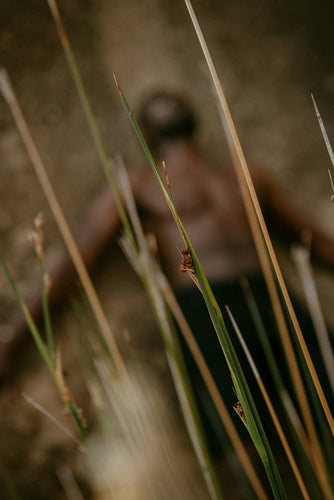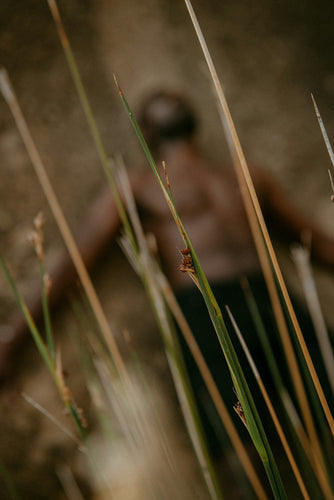
The Revival of Khoisan Traditions: Ancient Wisdom in the Modern World
In a world that is constantly evolving, many are drawn to the insights of ancient cultures and their traditions, which are no longer relics but living, breathing elements of modern life. At the core of these practices, which range from healing methods to sustainable living, are valuable insights that can help us live healthier, more balanced lives. The Khoisan people’s beliefs, particularly in the use of native plants for wellness, exemplify this timeless wisdom. Noting this, it's worth pondering: How can we fully embrace and preserve these ancient traditions while incorporating their powerful teachings into our modern lives? In this exploration, we’ll journey through the positive impacts of reconnecting with these legacies while uncovering the challenges and discovering how we can honour their roots in today’s world.
Celebrating the Healing Power of Nature
The Khoisan people, the heart and soul of southern Africa’s indigenous heritage, have long thrived in harmony with their surrounding environment. As one of the oldest cultural groups on earth, with a history spanning tens of thousands of years, they have an extraordinary understanding of plants, honouring the natural world in ways that have been passed down through generations.
Throughout history, they have used a variety of plants with nutritional, spiritual, and medicinal uses.
Among the most prominent ones are:
Rooibos (Aspalathus linearis): Originating from the Cederberg Mountains, rooibos tea was enjoyed for its calming properties and distinctive earthy taste. Packed with antioxidants and naturally free of caffeine, this herbal infusion has gained global acclaim. Often referred to as "red tea," rooibos embodies tranquility, offering a unique blend of flavour and health benefits that continue to captivate tea lovers worldwide.
Honeybush (Cyclopia spp.): Derived from wild plants, Honeybush tea has a mildly sweet, honey-like flavour. The Khoisan utilised it as a remedy for respiratory conditions, including colds, and for its nutritional value. Often considered sweeter than rooibos tea, this beverage has become a popular source of essential minerals such as calcium, potassium, zinc, magnesium, manganese, and sodium.
Buchu (Agathosma spp.): Originally used by indigenous communities for medicinal, ritual, and cultural purposes, buchu was brewed into tea to treat inflammation, infections, and stomach ailments. Recognised for its minty aroma, people nowadays also use it to heal wounds, arthritis, kidney and urinary tract infections, gout, and other conditions.
Sceletium tortuosum (Kanna): Also known as "kougoed" (meaning "something to chew"), Sceletium is a succulent plant native to South Africa, particularly the Succulent Karoo region. For centuries, the Khoisan people have valued it for its ability to reduce stress and elevate mood without impairing cognitive function, often helping hunters and herders on long journeys. Today, it remains a powerful source of inspiration for wellness goods, preserving its rich cultural legacy.
Hoodia gordonii: This spiny succulent was traditionally used as an appetite suppressant during long hunting trips across harsh desert environments. The Khoikhoi consumed the plant by chewing on the raw stem or using it in powdered form, helping sustain energy and endurance. However, the use of it today has become controversial, with concerns over its modern application for weight loss and the sustainability of wild populations due to overharvesting.
Aloe ferox (Cape aloe): Native to southern Africa, this hardy succulent has long been a cornerstone in the traditional medicine of the San people. Known for its diverse healing properties, it was used to treat wounds, digestive issues, and promote overall well-being. Its continued use today highlights its importance, solidifying its place as a vital component in herbal medicine.
Navigating Challenges and Preserving the Heart of Khoisan Traditions
The commercialisation of Khoisan botanical knowledge offers both opportunities and risks; although it can lead to cultural recognition and economic empowerment, it also raises environmental and ethical concerns, particularly with regard to exploitation and excessive harvesting. In addition, there are growing issues about cultural appropriation, where the misuse of indigenous knowledge without fair compensation or recognition can perpetuate harm and undermine cultural sovereignty. Despite the ongoing political unrest, marginalisation, and environmental dangers that the community faces, there remains a hopeful path for revival through education and initiatives for sustainable development that promote respect for local traditions and principles.
Positive Impacts and Honouring Khoisan Roots
The traditions of the Khoisan people, particularly their deep connection to nature and sustainable practices, offer valuable lessons for modern society. At the heart of their culture is an understanding of ecological balance, demonstrated through their responsible use of local plants. These practices emphasise sustainability, resourcefulness, and respect for the environment, aligning with modern wellness values that prioritise natural and holistic health. By honouring these, we can promote ecological awareness and adopt more sustainable practices into our lives. Furthermore, the Khoisan's focus on preserving cultural heritage through storytelling can inspire societies to prioritise cultural preservation and intergenerational knowledge sharing. These traditions are not only a source of pride but also a reminder of the importance of community and resilience in the face of challenges.
To honour ancient traditions, we must approach them with respect by supporting cultural preservation, knowledge transfer, and land protection. Engaging with Khoisan communities through fair trade and sustainable practices can help maintain their traditions while providing economic opportunities. The wellness movement can also play a key role in recognising Khoisan knowledge, particularly in plant-based remedies and holistic health. By valuing their resilience and appreciation for nature, we can ensure their traditions are celebrated and preserved for future generations.






